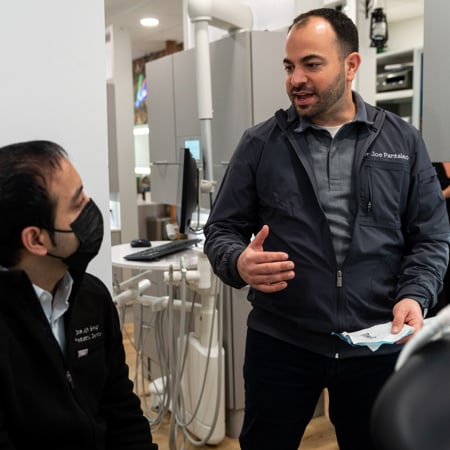Endodontic treatment or root canal therapy strikes fear in the hearts of many people. Most people associate visiting our endodontist in Smithtown with pain and other unpleasant feelings. This must be the reason some patients shy from undergoing endodontic treatment.
However, root canal therapy has been shrouded in myths. But you should know that endodontic treatment is pain-free since our dentist near you performs the procedure under anesthesia. When anesthesia kicks in, you will be comfortable and feel no pain.
Moreover, root canal therapy was designed not to inflict pain but to alleviate it. When an infection has reached its roots, you will be in pain. This procedure focuses on removing the decayed, damaged, or infected pulp, thus restoring the tooth.
Understanding the procedure will help debunk all the myths surrounding endodontic treatment.
The Phases of Endodontic Treatment
In a nutshell, endodontic treatment helps heal, repair, and restore structurally intact teeth. The main aim is to remove the damaged part of the tooth without damaging the other parts of the tooth. In other words, root canal therapy will save your tooth rather than remove it.
Without further ado, let’s check out the phases of endodontic treatment:
Phase 1
Evaluating and Diagnosing the Diseased Pulp
The pulp is a region of the tooth that houses the nerve endings and blood vessels. The inner part of the tooth can get damaged because of trauma or tooth decay on the tooth. When the outer protective covering of the tooth becomes structurally compromised, then bacteria and food debris will gain access to the pulp.
Endodontic procedures are designed to remove the infected pulp, which causes persistent tooth sensitivity and toothaches.
The initial step will be to evaluate and diagnose the damage, decay, or infection sustained on the pulp of the affected tooth. After your dentist near you ascertains that you need to undergo root canal therapy, you might be referred to an endodontist.
The treatment plan will commence by taking a series of digital x-rays to see the damage on the tooth and confirm if root canal therapy is the best way to go. The x-rays also help our endodontist to see whether the infection has spread to the surrounding tissue and bone.
Phase 2
Accessing and Eliminating the Diseased Pulp
After taking the x-rays, our dentist will remove the infected pulp. Our dentist will access the pulp using a drill and some files at this stage. Remember that the drilling will not happen before administering local anesthesia to ensure you are comfortable.
The diseased pulp, bacteria, and decayed tissue will be carefully removed to prevent infections in the future.
Phase 3
Cleaning Out the Root Canal
After our endodontist near you has removed the infected or damaged pulp, cleaning the root canal region is the next step. Our dentist will scrap and clean the region and then flash it out using water and sodium hypochlorite to remove all the diseased pulp and bacteria.
Phase 4
Sealing the Affected Tooth
Once our dentist has cleaned the tooth, the next step will be to seal the tooth. If you have a severe tooth infection, our dentist may decide to put some medication in the root canal and wait for about seven days before sealing the tooth to eliminate the chances of re-infection.
When the time comes to seal the tooth, our dentist will cover the cleaned-out root canal with a rubber-like material known as gutta-percha. Also, the tooth will need a temporary filling, preventing food, saliva, and bacteria from gaining access to the root canal. Also, our dentist will use an adhesive to seal the access hole and keep the root filler sealed.
Also, our dentist will need the tooth impression to get the correct filling or dental crown for your tooth.
Phase 5
Restoration
Restoration is the final step of endodontic treatment. The last stage is to restore the tooth’s functionality. Restoration usually takes place a few weeks after cleaning out the root canal. The temporary adhesive will be removed, and a customized tooth filling or dental crown will be placed over the tooth to restore its functionality and structural integrity.
The Takeaway
Endodontic treatment is done to remove the infected or inflamed pulp, thus saving a decayed tooth. The procedure is done in phases, taking at least two appointments. At the end of the procedure, your tooth’s structural integrity and functionality will be restored.
If you wish to undergo root canal therapy, contact us at Joseph B Pantaleo DDS to schedule an appointment.































